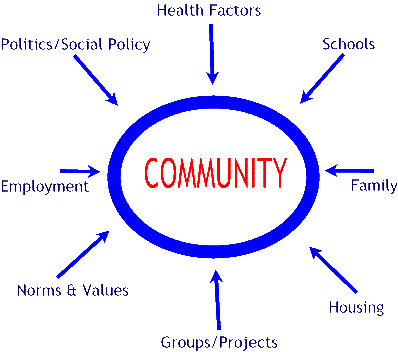|
THE APIE PLANNING MODEL |
||||
|
Planning
models are designed to show clear evidence of all the considerations
that you take when you plan a piece of youth work. During placements,
they are essential in order to meet certain criteria. Also, as more and
more authorities look to promote careful planning of work with young
people, it is good to have sound knowledge and experience of using
planning models. The
APIE model is one of two that can be explored at this site. You will
need to cover: Assessment Planning Implementation Evaluation In order to provide evidence for your consideration to the work you intend to do. It
will clearly show, in an easy-read format, that you have taken all these
into consideration when planning projects. Below are some questions
under each area of analysis – hopefully you can start to work out ways
in which you would answer them. The
ASSESSMENT Easily
the most thorough part of this model. Talk about the young people you
intend to work with. How old are they? What kind of social issues are
important to them? What are the major blocks in their lives? What is the
surrounding environment like? What kind of norms can you assess in the
community? Have you considered factors such as Gender/class/race
/disability/sexuality/religion in your assessment? Are there problems or
oppressive structures you wish to challenge? What are your professional
values in this matter?
EXAMPLE: Rural Youth
Centre. Membership 45 young people, with a majority attendance of male
members. A group of white young people have been making derogatory
comments about a new member of your project who they have labelled as
being gay. There is no conclusive evidence. The local community is
particularly hostile towards gay people, you are aware of a local
businessman who faces prejudice in the town. Young people do not receive
any alternative perspectives within this close knit community and hold
the usual stereotypes. Professional values- challenge oppression. The
PLANNING What
do you plan to do? How will the above assessment factors assist/hinder
you in your project/activity? What considerations will you need to make? EXAMPLE: Group work
sessions focusing on current issues around Section 28 and gay and
lesbian people. Debate the consequences of legislation and the criminal
label applied to people whose sexuality is not heterosexual. What’s
love got to do with it exercise. Prepare information sheet for parents
in case of enquiry or backlash. Over 16s only – refer to sex education
policy of the authority. The
IMPLEMENTATION What
kind of work will you do? What are your delivery methods? How long will
this project take? Do you need to raise money? How are young people
involved in the planning and delivery? What staff will be working with
you? What resources will you need? EXAMPLE: 1 session
initially to introduce topic, follow up with individual one to one
discussions informally. Newspapers to be collected – even ask young
people to bring in copies of their papers. Use examples such as “Do I
look Heterosexual?” to the group. Challenge stereotypes by educating
where they come from. The
EVALUATION How
will you measure the success of the work? How will young people relate
their anxieties/learning points/successes in an environment conducive to
them having confidence? How will you consider recommendations for
change? Will you involve the input of other staff in evaluating your
work? How do you measure learning? EXAMPLE: One to one
discussions to see how the session was and to explore further with young
people. Q&A at beginning of session – fact/fiction/myth responses
to be mirrored by similar questionnaire one week later. Monitor group
dynamics for two weeks, seek supervision where appropriate. As
I said before, this is only a guideline and does not serve as a command
sheet! Modify a planning model and add your own points that you feel
would be relevant. It is important to remember that planning models need
not consume a lot of time, but must cover the essential facts. Jason Wood, August 2000
|
WHAT'S RELATED? Recordings NAOMIE Model |
|||
Please
always reference the author of this page. How
to reference us.
Copyright © 1999-2002 Student Youth Work Online. All rights reserved.
Revised: February 14, 2002
.
![]() Contact the author
for further discussion about this paper
Contact the author
for further discussion about this paper
